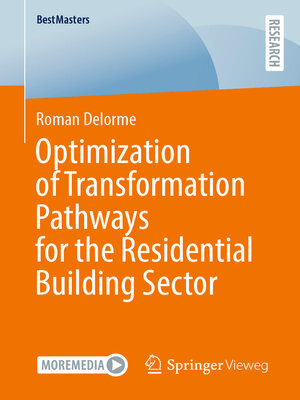Optimization of Transformation Pathways for the Residential Building Sector
ebook ∣ BestMasters
By Roman Delorme

Sign up to save your library
With an OverDrive account, you can save your favorite libraries for at-a-glance information about availability. Find out more about OverDrive accounts.
Find this title in Libby, the library reading app by OverDrive.



Search for a digital library with this title
Title found at these libraries:
| Library Name | Distance |
|---|---|
| Loading... |
The German residential building sector plays a crucial role in achieving net greenhouse gas neutrality by 2045. However, current renovation rates remain insufficient to meet climate targets. To improve the efficiency of the sector’s transformation, transformation pathways can be utilized, providing plans that specify renovation actions, timings, and locations. Despite their potential, existing literature lacks holistic and exact optimization frameworks for determining such pathways.
To address this gap, the author introduces a problem formulation and a MILP model to optimize transformation pathways for residential building stocks. To accelerate the solution process, he explores multiple Benders decompositions of the original MILP model. Additionally, he implements acceleration techniques, including constraint modifications, valid inequalities, strengthened Benders optimality cuts, a construction heuristic, and an in-out method. The Benders cut separation process is integrated into Gurobi’s branch-and-cut algorithm.
About the author
Roman Delorme holds master’s degrees in Energy Engineering and in Management, Business, and Economics from RWTH Aachen University, Germany. He is currently a research associate at the university's Chair of Operations Research, where he focuses on developing and refining solution methods for mixed-integer optimization models in the context of energy-related challenges.







